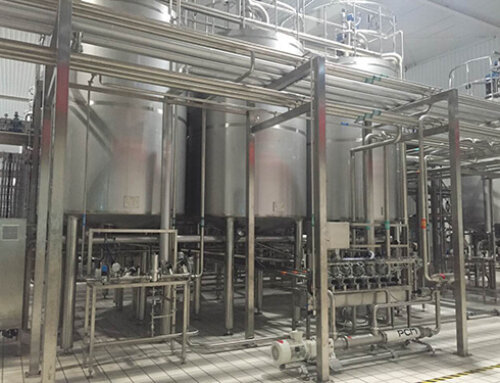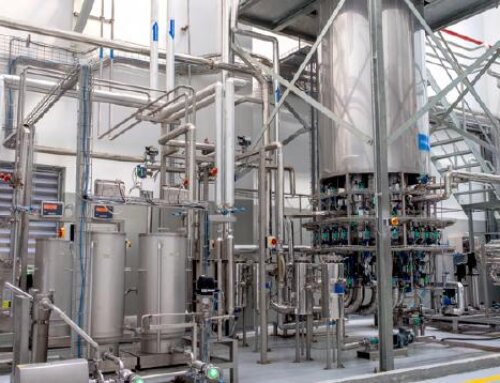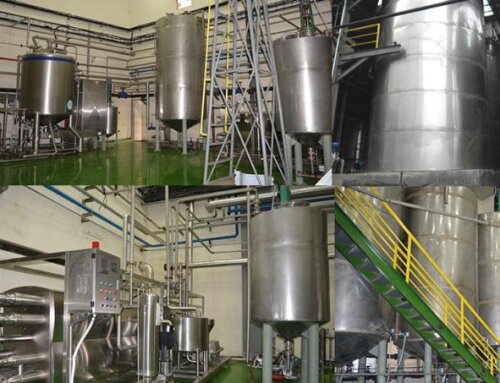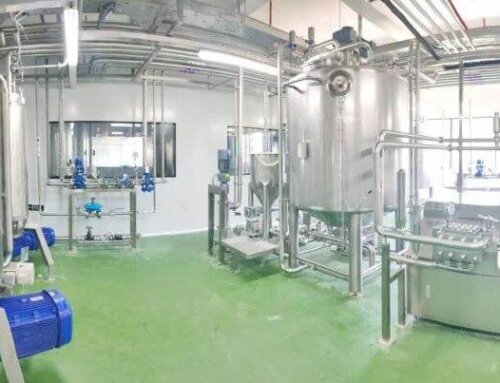Description Of Plant-Based Milk Processing Line
The availability and consumption of plant-based, also known as nondairy, milk alternatives have been on the rise. Sales of non-dairy milk alternatives have more than doubled, whereas consumption of traditional cow’s milk has dropped. This increase may be due to plant-based milk being perceived as “natural,” as well as a rise in veganism and avoidance of lactose. The primary plant-based dairy alternatives are oats, almond, soybean, coconut, cashew, and rice.
Vegetable/Plant-based protein beverage is one kind of milky beverage, it uses plant or fruit nuts, fruit pulp and soybeans as raw materials (such as soybeans, peanuts, almonds, walnuts, coconuts, oats, etc.). After washing, soak peeling, grinding, juice squeezing, blending and homogenizing, then sterilizing by high pressure or high temperature. Finally filling into the packaging container. The protein content in the finished product is not less than 0.5%(m/V).
The plant-based beverage processing plant can process almond, oat, soybean, millet, walnut, coconut, sesame, cashew nuts and other grain and nuts into drinkable beverages with different technological flowcharts.
The plant-based milk processing line includes raw grain/nut pretreatment, plant-based drinks extraction and separation, clarifying and mixing system, UHT sterilizing system, filling system and packing system.
The plant-based milk or plant-based beverages can use plant fresh materials or plant powder/flour as raw materials to proceed into the end products, and the capacity is 500LPH-10000LPH available to choose from.
Tetra Pak cartons are the most popular package for plant-based milk, and bottles or cans can also be used for packing plant-based beverages.
According to the taste and preference of the consumer market, the end plant-based milk can be made into slimy and creamy, and the plant material and water ratio is 1:5-15 according to different raw plant raw materials.

Plant-based Milk Processing Flowchart Introduction
Industrial plant-based milk processing typically involves the following steps:
- Raw material selection: High-quality plant-based ingredients such as soybeans, almonds, oats, or coconut are selected for milk production. The raw materials should be free from contaminants such as pesticides and heavy metals.
- Cleaning and preparation: The raw materials are cleaned, sorted, and processed to remove any foreign materials, such as stones or debris. The preparation process can vary depending on the raw materials but may involve dehusking, soaking, roasting, or grinding.
- Soaking the nuts or seeds: Before grinding, the nuts or seeds need to be soaked in water for several hours or overnight. Soaking helps to soften the nuts or seeds and makes them easier to grind.
- Raw material grinding: The prepared raw materials are mixed with water in a certain ratio to create a slurry or paste by the colloid mill or wet cereal grinding machine.
- Enzymatic hydrolysis: Some plant-based milk products require enzymatic hydrolysis, which involves breaking down the proteins and carbohydrates in the mixture using enzymes. This process can improve the taste, texture, and digestibility of the milk.
- Plant-based milk separating: Decanter separation is a technique that can be used to separate the solids and liquids in plant-based milk. It involves using a centrifuge or decanter to separate the solids (pulp and fiber) from the liquid (milk).
- Plant-based milk blending: Add fresh water to a blending tank according to the recipe. The amount of water needed varies depending on the type of nut or seed being used and the desired consistency of the milk. At the same time, the plant-based milk after separation will be pumped into the blending tank, blend the mixture on high speed until it becomes smooth and creamy. When for blending, vanilla extract, honey, or other sweeteners and flavorings can be added to the mixture to increase the flavor.
- Heating and homogenization: The mixture is heated to 55-60℃ to ensure the safety of the milk and to aid in the homogenization process. Homogenization is the process of breaking down the fat globules in the milk to create a smooth and creamy texture.
- UHT sterilizing: The milk is UHT sterilized to eliminate harmful bacteria and peculiar smell to extend its shelf life. The milk is typically heated to a high temperature for a short time, then cooled rapidly.
- Packaging: The milk is packaged in containers to maintain its freshness and to prevent contamination. The containers can be made from various materials, including cartons, bottles, or pouches.
- Quality control: Throughout the production process, quality control measures are in place to ensure that the milk meets the necessary standards for taste, texture, safety, and nutrition. Testing may include microbiological, chemical, and sensory analyses.

The Classification of Plant-based Milk Processing
According to the different raw materials, it divides into:
Plant-based means that the product is based on plant material, it can be divided into the following categories mainly:
—Beans(Soybean, chicken pea, peas, etc.). This type of plant-based product has high protein and fats.
—Grains(Oats, rice, buckwheat, quinoa, millet, etc.), grain plant-based milk includes high fiber, so when processing, it needs enzymatic hydrolysis.
—Nuts(Coconut, almond, cashew nut, walnut, peanut, hazelnut, etc.), and nut plant-based milk has high fats.
—Seeds(Sesame, hemp seeds, pumpkin seeds, sunflower seeds, flaxseeds, etc.).
We will choose the most popular plant-based milk for a brief introduction to the process, such as oats, almonds, soy, coconut and walnuts.
Oat Milk: Oat milk can not only supplement the human body with rich protein and various minerals, but also supplement some cellulose for the human body. This cellulose absorbs water and expands in the human body, speeding up the intestines’ peristalsis. It can also supply a variety of amino acids for the human body, and can also allow the human body to absorb some folic acid and vitamins. These nutrients can not only promote blood circulation, but also improve the oxygen-carrying capacity of red blood cells, and can nourish neurons and improve the function of the central nervous system.
Oat milk is one of the most popular plant-based drinks in the global now, the basic process for oat milk production is oats milling with water, then after enzyme inactivation and decanter centrifuge separating, then get the raw oat milk, then pure water, flavorings and other agents can be added into the drink, then after homogenizing, sterilizing and then filling into aseptic cartons, bottles or other consumable containers.
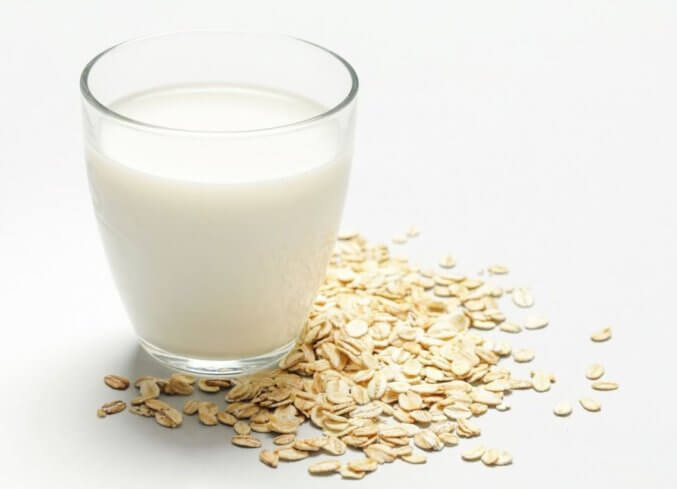
Soy Milk Beverage: Most soy milk beverages are made of natural non-GMO soybeans, which are not only high in fiber, protein, vitamins and minerals, but also low in sugar and remove a lot of purines. Drinking properly can also help with weight loss. It is a product with no beany smell made by grinding, pulping, and deodorizing with soybean as the main raw material. Its products are divided into pure soy milk, diluted soy milk, and soy milk beverage.

Coconut milk: It is a milky product prepared by using fresh and ripe coconut kernel as raw material, which is pressed into coconut milk, and added to an appropriate amount of water, sugar and other ingredients. Coconut milk has the effect of replenishing body fluid and quenching thirst. It can nourish the spleen and stomach, promote body fluid and diuresis. Coconut milk also contains minerals such as potassium and magnesium, which can diuresis and reduce swelling. Coconut juice also contains vitamins, protein and trace elements needed by the human body, which can replenish energy and beautify the skin.

Almond Milk: A milky product prepared by using almonds as raw materials, soaking, grinding, and extracting pulp, and then adding the appropriate amount of water, sugar and other ingredients. Almond milk is rich in protein, vitamins, amino acids, linolenic acid and minerals (calcium, iron, selenium, potassium, zinc, etc.). It has the effects of moisturizing the lungs and relieving cough, quenching thirst, regulating blood lipids, preventing arteriosclerosis and regulating immune function. Almond milk also contains flavonoids and polyphenols, which can lower cholesterol and reduce the incidence of heart disease and many chronic diseases. In addition, almond milk can also promote the microcirculation of the skin, can make the skin ruddy and shiny, and have anti-aging beauty effects.

Walnut milk: Walnut milk is a pure natural vegetable protein drink. The product uses high-quality walnut kernels and purified water as the main raw materials. It is refined by modern technology and scientific blending. It has a delicate taste and a special strong walnut fragrance. It can be served cold or hot, with a hot fragrance Thicker. It contains a large amount of polyunsaturated fatty acids and phospholipids, especially has the function of soothing the nerves and invigorating the brain, and has the effect of enhancing memory, developing intelligence, and improving sleep quality.

Other Protein Drinks: Such as peanuts, rice, cashew nut, pumpkin seeds, sunflower seeds, etc., and water in a certain proportion after grinding, pulping and other processes, and then adding sugar and other ingredients to prepare products.
According to processing characteristics, it divides into:
Natural plant-based beverage: Plant seeds are simply pre-treated (shelled, soaked, etc.), mixed with water, refined, heated and boiled for direct drinking. It does not contain any food additives, and contains all the ingredients of the plant seeds, even crude fiber.
Diluted plant-based beverages: plant seed kernels are pretreated with raw materials, refined with water, separated from pulp residue, and food additives are added. After sterilization, a homogeneous emulsion with a shelf life of more than 3 months is obtained as a vegetable protein beverage. The protein and fat content≥1%.
Fruit and vegetable compound plant-based beverage: The vegetable protein beverage is added with fruit juice or vegetable juice, and the processed fruit and vegetable compound vegetable protein beverage is obtained.
Fermented plant-based beverage: Fermented vegetable protein beverage, also known as plant lactic acid bacteria beverage, is a beverage prepared by fermentation of lactic acid bacteria with plant seeds as the main raw material.
The Benefit Of Plant-Based Milk
Plant protein beverages are loved by people because of their natural, nutritious and green characteristics. They not only provide the energy, protein, vitamins and minerals needed by the human body, but also because the raw materials contain a variety of functional ingredients (such as unsaturated fatty acids, Phospholipids, flavonoids, anthocyanins, saponins, sterols, etc.) and have good health care effects. The minerals and trace elements contained in vegetable protein drinks can also buffer the adverse effects of acidic foods such as meat, fish, and eggs.
In addition, because plant protein and its products contain a lot of linoleic acids and linolenic acid without cholesterol, if consumed for a long time, it will not cause cholesterol deposition on the blood vessel wall, and it also has a dissolving effect on the deposited cholesterol on the blood vessel wall. Most Asians do not contain lactose in their bodies. Drinking animal milk has the problem of allergies; Drinking plant protein beverages does not contain lactose, which is good for digestion and absorption.
